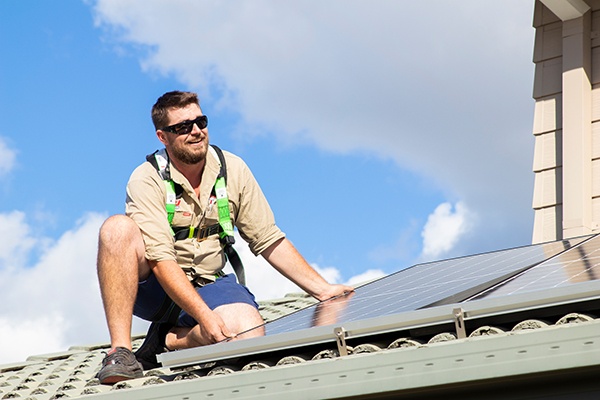31 January 2023
Beginners guide to solar inverters
Everything you need to know about your new solar inverter
The main purpose of a solar inverter is to optimize the energy generated by a solar PV system and make it accessible for use in the home. In order to do this, the inverter must first convert DC power generated by the PV modules into AC power which can be used by households.
Solar inverters come in different shapes and sizes depending on their type and output capacity. There are three main categories of solar inverters: string inverters, microinverters, and central inverters.

Key features of a solar inverter
Solar inverters have several key features that make them essential components in any solar system installation. These include:
- MPPT (maximum power point tracking) technology which helps maximize energy production
- integrated monitoring software which can provide real-time feedback on energy production
- overvoltage protection which ensures that no electrical damage occurs during peak sunlight hours
- temperature compensation which keeps operation optimal even during extreme temperatures
- anti-islanding protection to prevent accidental connection with external grids or networks
- multiple input currents allowing increased flexibility
- surge protection against sudden spikes in current flow
- safety cut out switches for easy shutoff operation
- remote monitoring capabilities for easy access from anywhere in the world
- and adjustable settings for fine-tuning performance parameters according to specific needs
What are the buttons on the solar inverter for?
Many solar inverters have one, two or three buttons on the unit which are used to navigate the functions on the display screen. As the design of inverters can vary greatly from one model or manufacturer to the next users need to consult their specific inverter operation manual for instructions on what buttons do what and how to use them.
Other systems use a mobile app which provides information about how the system is operating or any fault warnings. These may have a single warning light which turns red if there is an issue, prompting homeowners to check the app for more information.
Common reasons for inverter fault notifications
Solar inverter fault notifications can indicate there is an issue with another part of the solar PV system or a fault within the inverter itself. Common reasons inverters display fault codes can be:
- overheating of the inverter
- faulty installation or wiring
- issues with the solar panels such as shading or dirt accumulation
- faulty components in the inverter
- incorrectly set parameters for the system.
It is important to note that not all fault notifications require a call out from a solar electrician, sometimes they can be fixed by simply resetting the inverter. However, it is best practice to check your specific inverter operation manual for full details, and seek professional assistance from your local solar installer.

In conclusion, solar inverters play a vital role in any PV system installation by ensuring the efficient conversion of DC power produced by solar panels into usable AC electricity for homes. They come in different types and sizes depending on need, each featuring its own set of features designed with safety, performance, efficiency, and convenience in mind. With advanced monitoring capabilities such as remote control access from anywhere around the world, solar inverters offer unparalleled convenience when managing your own renewable energy source at home.
Suggested articles
No articles found

